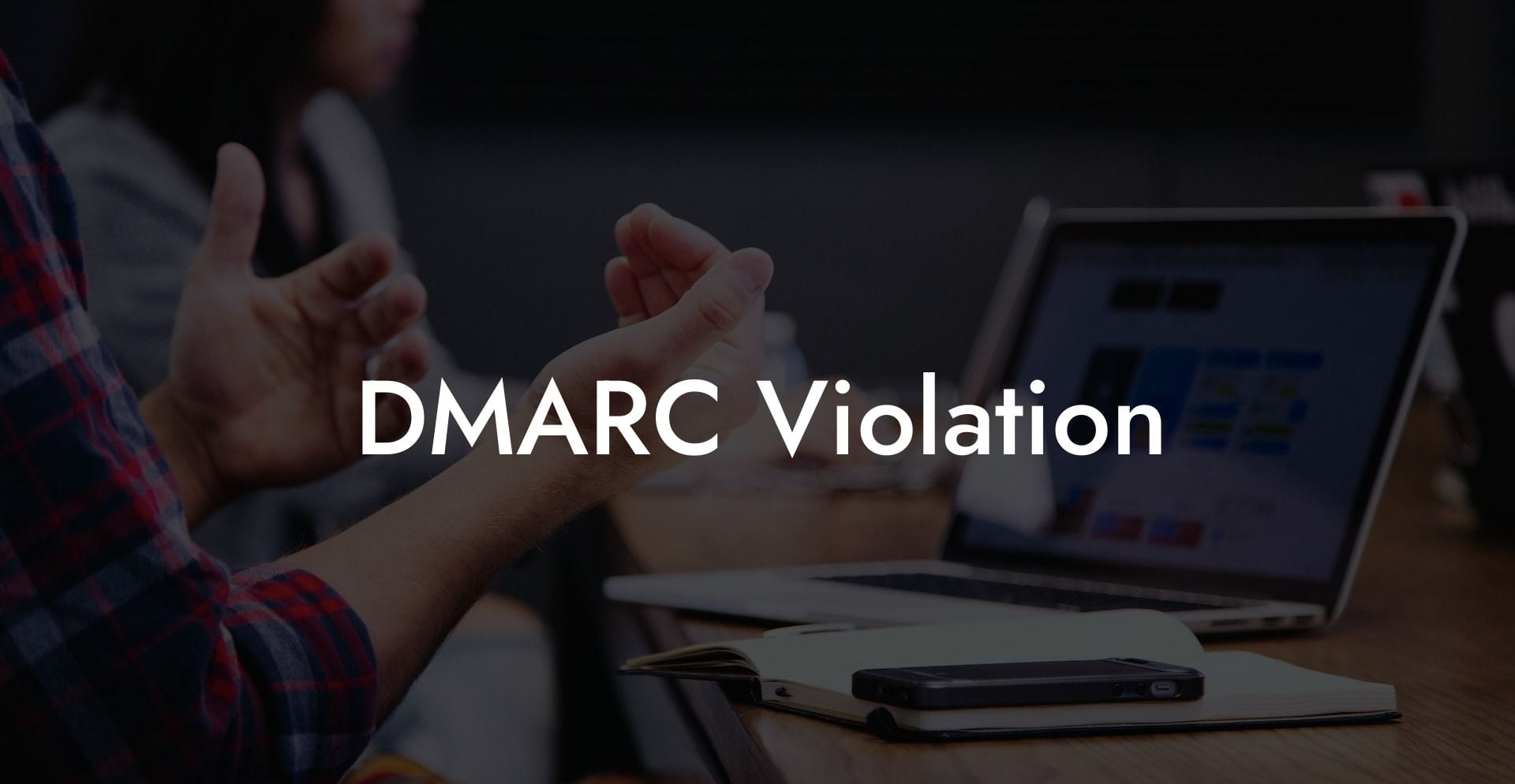In today's highly interconnected digital world, email security has become a top priority for organizations of all sizes. With cybercriminals continually evolving their tactics, businesses need to be vigilant in their efforts to protect their clients and employees from being targeted by phishing attacks. One of the main defences against these cyber-threats is DMARC (Domain-based Message Authentication, Reporting & Conformance). However, when DMARC policies are not correctly configured or enforced, violations occur, leaving the door open for nefarious cyber actors. In this article, we will provide an in-depth exploration of DMARC violations, explaining how they happen, the potential effects, and offering protective strategies to ensure the safety of your organization's email domain.
DMARC Violation Table of Contents
What Is DMARC, and Why Is It Important?
What Constitutes a DMARC Violation?
What Is DMARC, and Why Is It Important?
DMARC is an email authentication protocol that aids in preventing email spoofing and phishing attacks. It operates by securely authenticating an email's sender, identifying the domain's SPF (Sender Policy Framework) and DKIM (DomainKeys Identified Mail) signatures during the email sending process. By enforcing a DMARC policy, organizations can decide how receiving email servers should handle unauthenticated emails, such as rejecting, quarantining, or accepting them with caution.
What Constitutes a DMARC Violation?
Protect Your Data Today With a Secure Password Manager. Our Top Password Managers:
A DMARC violation occurs when an email sending domain's SPF and/or DKIM authentication checks fail, resulting in the email not aligning with the domain's DMARC policy. This could be caused by various factors, including incorrect configuration, malicious spoofing attempts, or legitimate but unaligned sending practices.
Incorrect Configuration
- SPF records listing incorrect IP addresses
- Inadequate DKIM signatures for the domain
- Domain's DMARC policy misconfigured or missing
Malicious Spoofing Attempts
- Phishers using the domain in their email's "From" address
- Domain misrepresented in an email's "Return-Path" header
Legitimate but Unaligned Sending Practices
- Email forwarding and mailing list services without authentication
- Third parties authorized to send emails without proper SPF/DKIM records in place
The Impact of DMARC Violations
DMARC violations weaken an organization's email security, leaving it vulnerable to cyber-attacks. Some consequences of DMARC violations are:
- Reduced email deliverability, leading to recipient servers blocking or quarantining legitimate emails
- Lack of visibility into the domain's email traffic, making it hard to detect potential phishing attacks
- Loss of customer trust and damage to the organization's reputation as email recipients encounter suspicious looking emails that appear to be from your domain
Strategies to Prevent DMARC Violations
Proper Setup and Alignment of SPF, DKIM, and DMARC
Ensuring that your domain's SPF and DKIM records are correctly configured is essential. Consider using online tools to verify your SPF and DKIM records, or consult with an email security expert for assistance.
Monitor and Analyze DMARC Reports
DMARC provides valuable reports detailing email authentication results. Regularly monitoring these reports will enable you to detect potential issues, identify trends, and adjust your DMARC policy accordingly to maintain robust email security.
Implement Strict DMARC Policies
Enforcing a stringent DMARC policy, such as "reject" or "quarantine," will reduce the likelihood of spoofed emails reaching your recipients. However, ensure that your domain's SPF and DKIM records are properly aligned before implementing strict policies to avoid blocking legitimate emails.
DMARC Violation Example:
Imagine this scenario: Your organization uses a third-party email marketing service to send newsletters to subscribers. You've authorized the service in your domain's SPF record, but the service's emails fail your DKIM authentication because it doesn't support DKIM signing. As your organization's DMARC policy is set to "reject," the subscribers receive none of the sent emails, as their email servers block the emails in accordance with your policy. This DMARC violation could have been avoided if your organization had ensured that the third-party email marketing service supported DKIM, or adjusted your DMARC policy to be more lenient with unauthenticated, but legitimate emails.
DMARC violations pose a serious risk to your organization's email security, reputation, and potentially the safety of your clients and employees. It is vital to implement and maintain a robust DMARC policy, supported by well-configured SPF and DKIM records. Regular monitoring and analysis of your email authentication data will help you stay a step ahead of cybercriminals looking to exploit any weaknesses in your email system. Share this comprehensive guide with others to spread awareness of DMARC violations, and explore more valuable resources on Voice Phishing's website.
Protect Your Data Today With a Secure Password Manager. Our Top Password Managers:















